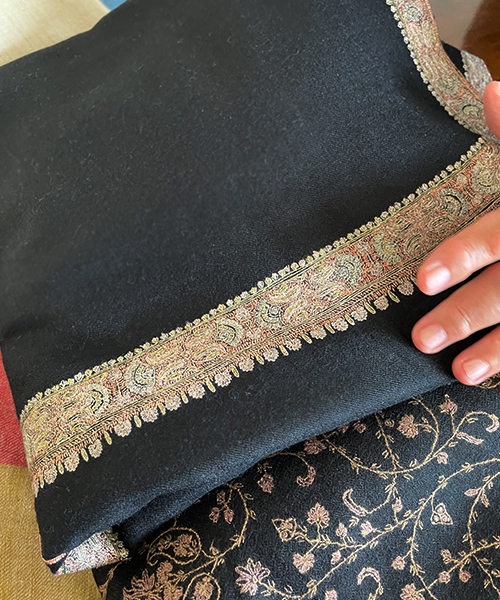
The truth about Pashmina
Pashmina is a goat
Pashmina refers to a type of cashmere wool made from it. The name comes from Pasmineh the Persian word for wool pashm. This wool comes from changthangi or ladakh or pashmina goat, a special breed of goat indigenous to high altitude of the Himalayas.
The high Himalayas has a harsh, cold climate and the goats, who have developed an exceptionally warm fine light fibre coat, shed their winter coat every spring and the fleece is caught on thorn bushes. Villagers would scour the mountainside for the finest fleece to be used.
The pashmina goat in that freezing environment grows a unique, incredibly soft coat called pashm, which is six times finer than human hair. It is so fine that it cannot be spun by machines, so the wool is hand-woven into cashmere products including shawls, scarves, wraps, throws, stoles etc. for export worldwide. Cashmere shawls have been manufactured in Kashmir for hundreds of years

Cashmere & Pashmina
Cashmere used for pashmina shawls was claimed to be of a superior quality. One distinct difference between Pashmina and Cashmere is the diameter of the fibre.
Pashmina fibres are finer and thinner than cashmere fibres, therefore it is ideal for making light weight garments like fine scarves.
In the fashion world, pashmina shawls were redefined as a shawl/wrap with cashmere and silk, (known as silk pashmina), while maintaining the actual meaning of pashmina.

All shawls are not Pashmina
Today, however, the word PASHMINA has been used too liberally.
Some shawls marketed as pashmina shawls contain wool, while other companies have marketed the man-made fabric viscose or polyester as "pashmina" with deceptive marketing statements such as "authentic viscose pashmina", thus creating confusion in the market.
Copyright ©2024
privacy policy | terms of use
